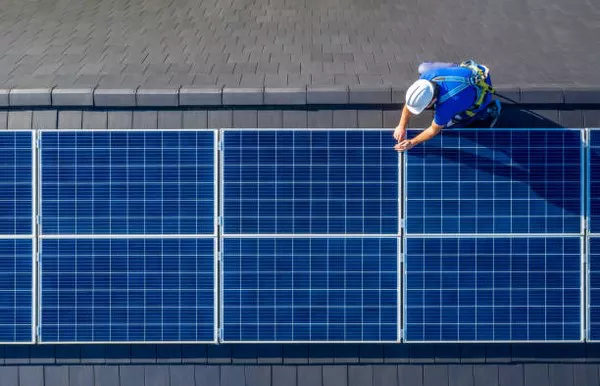Amazon has unveiled its AI-powered solar farm as part of its commitment to achieving net-zero carbon emissions by 2040. This initiative places Amazon among other tech giants like Meta and Microsoft in the race toward sustainability.
Located on a 1,000-acre site in the Mojave Desert, the Baldy Mesa solar and storage facility near Adelanto, California, contributes 150 MW of solar energy and 75 MW of battery energy storage. This project is expected to offset 300,000 tons of CO2 emissions annually.
Amazon Web Services (AWS) employs artificial intelligence to optimize the solar farm’s energy output, managing when to store energy and when to release it back to the grid. Owned and operated by AES Corporation, Baldy Mesa is part of Amazon’s broader strategy involving ten solar + storage projects across California and Arizona. These projects not only supply energy to local communities but also help Amazon count CO2 reductions towards its sustainability targets.
Amazon’s extensive energy use and carbon footprint span fulfillment centers, technology hubs, data centers, and delivery services. In its most recent sustainability report, Amazon estimated its CO2 emissions at 71.27 million metric tons, a slight decrease from 2021 but a 40% increase since 2019. Major emitters include shipping and fulfillment operations, data centers, and facility operations, with transportation contributing significantly to global carbon emissions.
Despite these challenges, Amazon reported that in 2022, 90% of its electricity came from renewable sources, with plans to reach 100% by 2025—five years ahead of its original goal. The company continues to focus on reducing emissions from transportation and other operations.
AWS plays a crucial role in Amazon’s decarbonization efforts. Offering AI, cloud storage, code building, and data analytics, AWS helps optimize energy use and reduce carbon footprints for various applications. According to a 2019 company-commissioned report, infrastructure using AWS was 3.6 times more energy efficient and reduced carbon footprints by 80%. With renewable energy integration, this reduction reaches 90%.
Amazon Sagemaker, an AWS service, optimizes the battery storage units at Baldy Mesa, analyzing 33 billion data points annually to manage energy storage and exchange based on grid conditions.
Amazon’s net-zero strategy, guided by its Climate Pledge, involves regular greenhouse gas reporting, CO2 elimination strategies, and carbon offsets. Partnering with over 400 companies and organizations, Amazon’s $2 billion sustainability plan targets energy efficiency, electrification of delivery services, eco-friendly building materials, and carbon neutrality.
Amazon claims the title of the world’s largest renewable energy buyer, with over 500 solar and wind projects globally, supplying renewable power to approximately 7.2 million U.S. homes annually.
Other major corporations are also making significant strides in renewable energy and sustainability. Meta has achieved 100% renewable energy use for its operations, supporting 86 solar and wind projects across the U.S. Apple powers its operations with 18 GW of renewable energy and aims for carbon neutrality by 2030. Walmart plans to transition to 100% renewable energy by 2035, with 600 projects in development across ten countries. Microsoft aspires to be carbon-negative by 2030, leveraging carbon offsets and renewable assets totaling over 19.8 GW globally.
These collective efforts underscore the tech industry’s commitment to sustainability and the crucial role of renewable energy in achieving net-zero emissions.

